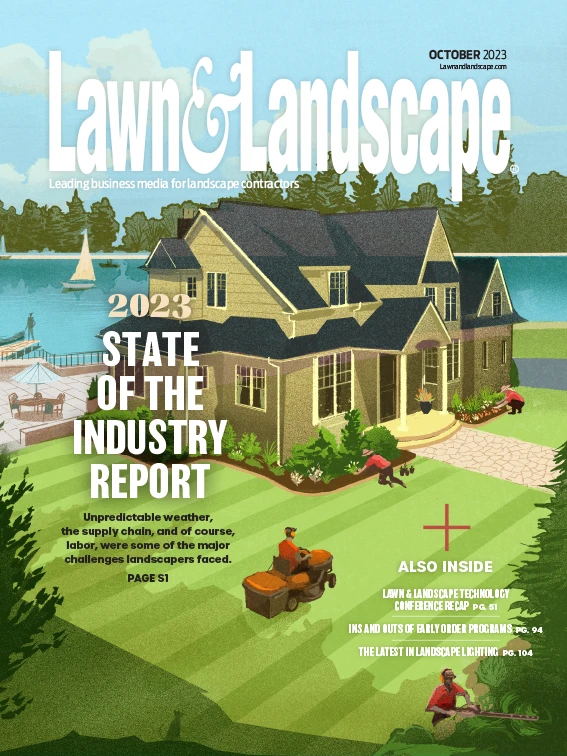
Jud Griggs
Design/build consultant
Over the years I have compiled a list of what I call “Magic Questions” that are most effective in determining a client’s needs and desires. Asking the right questions to uncover your client’s real needs is crucial for providing effective solutions and building strong relationships. Clients typically aren’t trying to hide this information from you; they just don’t know how to express what they want. It’s up to you as the professional to dig deep and get to the real needs of a client. This is done by asking the right questions.My list of Magic Questions now totals 20. For the sake of brevity and space, I will give you my Top 10:
1. What challenges are you currently facing?
Identifying pain points and obstacles helps you tailor your solutions to address their specific issues. The pain points may be a contractor that is not providing top quality results in their quality or service. It may be an HOA board that is constantly complaining about the current provider. It may be a designer that does not listen. Knowing the client’s pain points will allow you to create a solution that eliminates the client’s frustrations.
2. Can you describe your ideal outcome or solution?
This question helps you understand the client’s vision and desired results. Knowing a client’s vision will allow you to create a solution that aligns with your client’s vision for the project. If there is alignment here, the budget discussion gets a whole lot easier at contract time.
3. What is your budget or resource allocation for this project?
Understanding their financial constraints helps you propose feasible solutions. This question is extremely helpful on commercial projects. With office vacancies increasing as more employees are working remotely, landscape budgets are being reduced. If you become more of a partner than a vendor with your client and help them best allocate the budget dollars they do have available while still meeting the key goals, you will be a hero in their eyes.
4. What previous solutions or approaches have you tried?
Learning about past experiences gives you insights into what has worked or not worked for them. Finding out where a previous contractor failed will prevent you from going down that same path. Perhaps it was a designer who didn’t listen and provided solutions that didn’t meet the client’s vision for the project.
5. What timeframe are you looking to work within?
Knowing their timeline helps you set realistic expectations and plan accordingly. Most of my clients have lead times extending out not just weeks but months. If a client is expecting their project to be completed in time for a fall wedding, but your schedule is full until the end of the year, you don’t have alignment. Instead of saying no to a great project, you can offer alternatives like a property clean-up and mulching to make the property look great for the wedding and start the major construction after the wedding.
6. How do you measure success?
Understanding their criteria for success helps you align your efforts with their expectations. Measurements might be a quality score (QC) over 90, or no call backs. Another may be finishing on time and on budget. It may be something harder to measure like creating a “fun” process with minimal disruptions. You need to find out what success is in the eyes of the client.
7. Are there any specific preferences or must-haves?
This question helps you uncover any non-negotiable elements to include in the proposal. It could be something as simple as including a favorite tree, or something more involved like a firepit or outdoor kitchen. Make sure it’s part of the solution you propose. I have lost projects by not including that favorite tree or group of perennials that the client asked for up front.
8. What factors are most important to you in making a decision?
This question helps you understand their decision-making criteria which can guide your recommendations. Budget is the typical response to this question, but budget may just be a smokescreen. If you have captured the client’s vision in your proposal, the budget objection will disappear.
9. How would you like communication and progress updates to be handled?
This question helps you establish clear communication channels and maintain transparency. This is critical in today’s world where there are many ways of communicating. Some clients prefer texting, while others like face-to-face meetings (or Zoom calls). Others want you to pick up the phone and talk with them. Don’t take the easy way out and send a bunch of emails that don’t get read. Communication gets much easier when you do it the way a client desires.
10. What do you value most in a partnership or collaboration?
This is the most powerful Magic Question. Understanding their values helps you build a strong working relationship. If you can get your client to open up and tell you this, you just developed a strong relationship and have become true partners with your client.
Remember, active listening is just as important as asking the right questions. Pay attention to their responses and ask follow-up questions to delve deeper into their needs and concerns. If you would like to receive the full list of “Magic Questions,” please contact me at judson@harvestlandscapeconsulting.com.
Get curated news on YOUR industry.
Enter your email to receive our newsletters.
Explore the October 2023 Issue
Check out more from this issue and find your next story to read.
Latest from Lawn & Landscape
- Project EverGreen helps revitalize Milan Park in Detroit
- Trex Company wins Product of the Year, Judges’ Choice Winner at Environment+Energy Leader Awards
- General Equipment & Supplies in Fargo adds Takeuchi equipment
- Mariani Premier Group acquires Hazeltine Nurseries
- EnP Investments adds Mark McCarel as Northeast territory sales manager
- Our April issue is now live
- Ready or not
- Tribute to an industry guru






